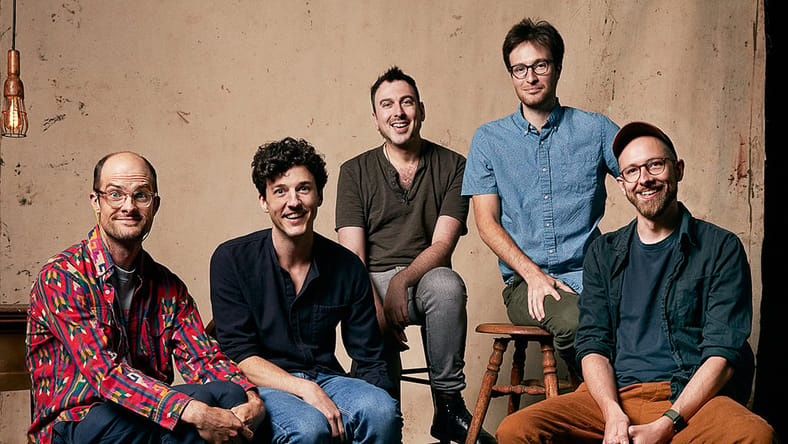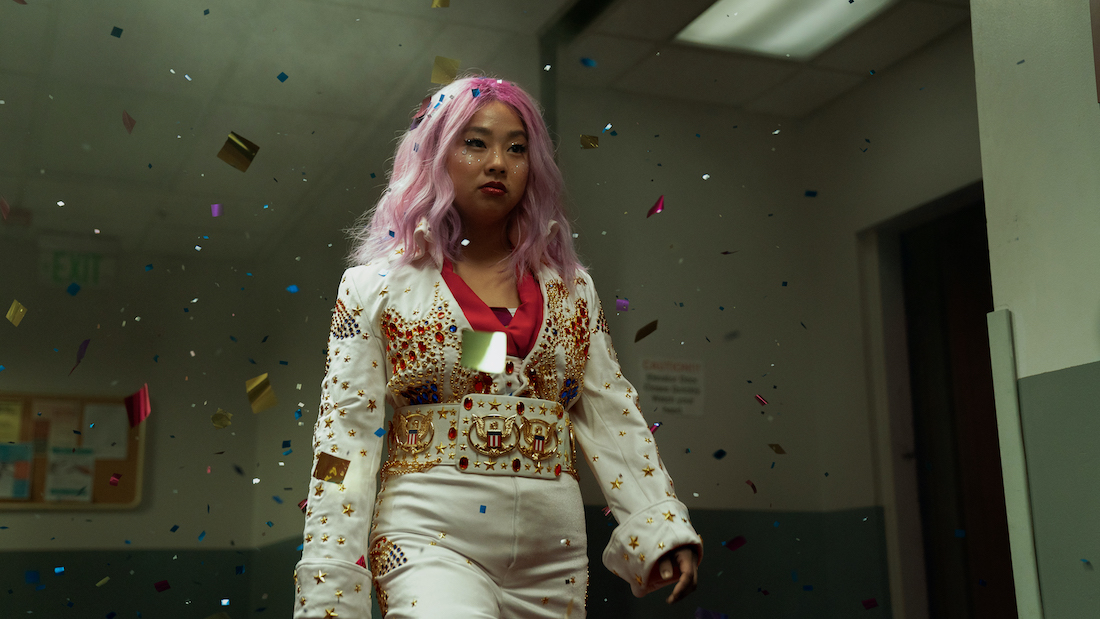
Everything Everywhere All At Once co-writer-director Daniel Scheinert wants to set the record straight — the Best Picture-winning movie did not rely on AI for its famously delightful visual effects.
Starring Michelle Yeoh and Stephanie Hsu as a mother and daughter at odds with each other across multiple universes, the Best Picture winner makes unique use of visual effects to pull off its characters’ abilities to transcend time and space. Everything Everywhere All At Once also stars Jamie Lee Curtis and Ke Huy Quan, both of whom earned acting Oscars alongside Yeoh.
Scheinert, who co-directed and co-wrote the film with fellow Emerson College alum Daniel Kwan, also Oscar winners for the film, sat down for a panel discussion on Friday night with four of the film’s key visual effects artists — Benjamin Brewer, Zak Stoltz, Ethan Feldbau, and Jeff Desom — at the opening night of the Salute Your Shorts Film Festival in Los Angeles.
Together, they discussed in detail just how hands-on and personal the film’s VFX process was from start to finish.
Daniel Scheinert Says Everything Everywhere All at Once Did Not Rely on AI for its Visual Effects
“I pulled up this headline that I found earlier today because Dan [Kwan] pointed it out to me… ‘Everything Everywhere: How AI Is Revolutionizing Filmmaking‘ or ‘Hollywood 2.0: How the Rise of AI Tools‘ helps this movie,” Scheinert read.
“That headline made me upset, because I feel like our movie is frame by frame the opposite of an AI-generated movie. Like, every single prop, costume, frame, my friends worked their asses off,” he said.
“Like, nope, that is not how we generated this thing. It’s a miracle that my friends pulled this thing off, and they are not run by [OpenAI CEO] Sam Altman.”
VFX artist Ethan Feldbau agreed.
“The press are kind of running away with that. And I would even say that Everything Everywhere was probably one of the last films made before generative AI and stable diffusion really came into the picture,” Feldbau said.
Zak Stoltz, another key member of the film’s VFX team, pointed to the scene where Evelyn flashes through multiple different universes as an example of the incredibly detailed, manual work he and his team did.
“The scene where it’s flashing Evelyns, we did all those one by one,” Stoltz said. “Everything was manual. It’s crazy reading some of those articles seeing, ‘Oh, [AI] was critical to success’ — it’s like, someone used a roto tool for, like, one shot.”

Everything Everywhere All At Once VFX artist Evan Halleck did tell Variety that he used a green screen tool to remove the background in the rock scene. But Stoltz, Scheinert, Brewer, Felbau, and Desom all argue that to suggest the movie leaned heavily on AI for its visual effects is inaccurate.
“Honestly, like, anything that was done with AI in Everything Everywhere, it could have been done just as good or better with just regular manual techniques, and probably just as fast because at the time, it just wasn’t that good. So I call bullshit,” Stoltz added.
In fact, VFX artist Ben Brewer spent a month manually working on the fight scene where several different objects (including an Oscar) flash through Jobu Tupaki’s hands.
“Then some kid on Tiktok did it in 30 seconds. Took me like a month,” Brewer joked.
Feldbau also pointed out Brewer worked very hard on the aforementioned flashing Evelyns scene, which could have been done using AI to remove the backgrounds, but was done manually instead.
“You had sort of spearheaded the everywhere Evelyn’s, which was the 75 different versions of Evelyn’s profile with a changing background, something that was a very hot, hot debate [of] how we were going to approach it,” Feldbau said to Brewer. “And you would put a lot of effort into manually doing Photoshop work for it. And I suppose that represents a shot where generative AI could just swap out a background very quickly, but I don’t think it would have the artistry or intrinsic aesthetic qualities that made it so strong.”
Brewer agreed.
“I think that AI is lacking direction, it’s lacking creative intent,” Brewer added. “Every single little frame of the film is something where you had to sit down and think about this character in different universes… everything in that movie has years of work and thought and development behind it — human development. It’s a human story.”
Brewer’s short film, “A Folded Ocean” screened over the weekend at Salute Your Shorts, where it won the festival’s best genre and best local film prizes.
Main Image: (L-R): Daniel Scheinert, Benjamin Brewer, Ethan Feldbau, Zak Stoltz, Jeff Desom. Photo Credit: Emily Sandifer.
